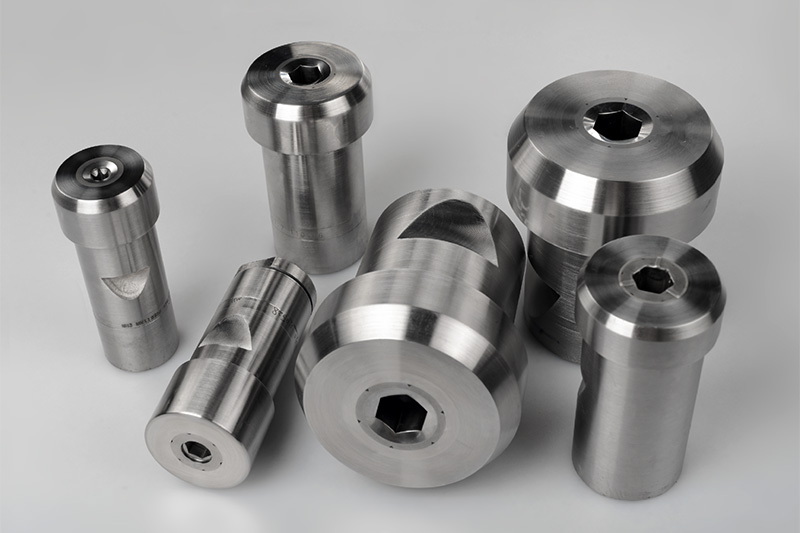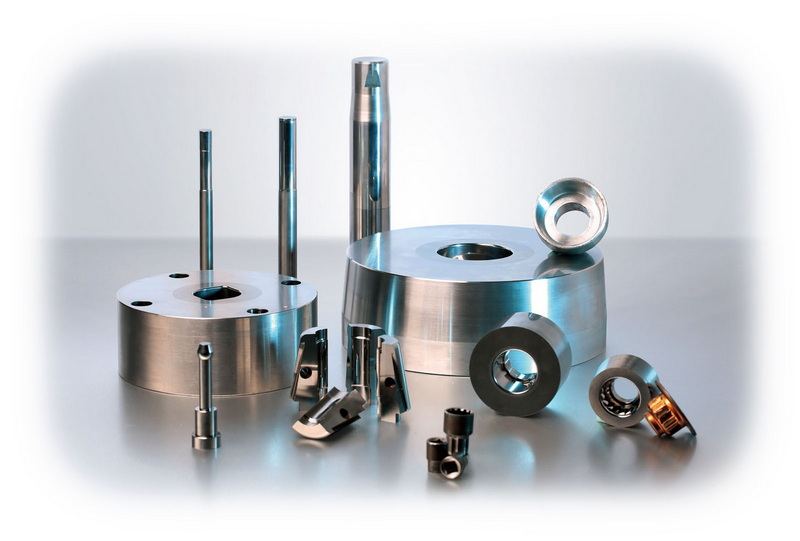Content Menu
● Introduction to Tungsten Carbide Dies
>> Challenges in Polishing Tungsten Carbide
● Traditional Polishing Methods
>> Diamond Paste Polishing
>>> Kemet Diamond Paste Method
● Advanced Polishing Techniques
>> Abrasive Flow Polishing (AFP)
>>> Benefits of AFP:
>> Electrochemical Polishing (ECP)
>>> Benefits of ECP:
● Specialized Machines for Polishing
>> Tungsten Carbide Die Polishing & Grinding Machine
>> CNC Polishing Machines
>>> Benefits of CNC Machines:
● Safety and Maintenance Considerations
>> Safety Precautions
>> Tool Maintenance
● Conclusion
● Frequently Asked Questions
>> 1. What is the best method for polishing tungsten carbide dies?
>> 2. How does abrasive flow polishing improve surface quality?
>> 3. What are the benefits of using specialized machines for polishing?
>> 4. Why is cleaning crucial during the polishing process?
>> 5. Can diamond paste be used for other materials besides tungsten carbide?
● Citations:
Tungsten carbide dies are widely used in various industrial processes due to their high wear resistance and toughness. However, polishing these dies poses significant challenges due to their hardness. In this article, we will explore the techniques and tools used for polishing tungsten carbide dies, including the use of diamond paste and advanced machinery.

Introduction to Tungsten Carbide Dies
Tungsten carbide is a sintered material composed of tungsten carbide particles bonded together by a metal matrix, typically cobalt. Its high hardness and wear resistance make it ideal for applications such as wire and bar drawing dies. However, these properties also make it difficult to shape and polish.
Challenges in Polishing Tungsten Carbide
Polishing tungsten carbide requires overcoming several challenges:
- Hardness: Tungsten carbide is extremely hard, making it difficult to remove material during polishing.
- Thermal Conductivity: The high thermal conductivity of tungsten carbide can lead to heat buildup during polishing, which may damage the die or the polishing tools.
- Material Brittleness: Tungsten carbide is brittle and can crack under excessive stress, making it crucial to control polishing pressures.
Traditional Polishing Methods
Traditionally, silicon carbide and boron carbide grits have been used for lapping and polishing tungsten carbide dies. However, these methods can be time-consuming and may not produce the desired surface finish.
Diamond Paste Polishing
Recent advancements in diamond technology have led to the development of specialized diamond compounds designed for polishing tungsten carbide. Diamond paste is mixed with oil to create a polishing compound that can withstand the high temperatures generated during the polishing process.
Kemet Diamond Paste Method
The Kemet method involves using three grades of diamond paste: 45 micron, 14 micron, and 3 micron. This process is detailed below:
1. Pre-polishing: Use 45 micron diamond paste with a hard lap (steel, brass, or copper) to pre-polish the die.
A[Die] -->|45 micron diamond paste|> B[Hard Lap];
B -->|Pre-polishing|> C[Die Surface];
2. Intermediate Polishing: Employ 14 micron diamond paste with hard wood to further refine the surface.
A[Die] -->|14 micron diamond paste|> B[Hard Wood];
B -->|Intermediate Polishing|> C[Die Surface];
3. Final Polishing: Apply 3 micron diamond paste with soft wood (balsa or similar) to achieve a high finish.
A[Die] -->|3 micron diamond paste|> B[Soft Wood];
B -->|Final Polishing|> C[High Finish Die Surface];
Advanced Polishing Techniques
In addition to manual polishing methods, advanced techniques like abrasive flow polishing (AFP) offer improved efficiency and surface quality.
Abrasive Flow Polishing (AFP)
AFP involves using a pressurized abrasive medium to polish the die. This method can significantly improve surface roughness compared to traditional hand polishing.
Benefits of AFP:
- Improved Surface Quality: AFP can achieve a smoother surface finish, enhancing die performance.
- Increased Efficiency: Automated processes reduce labor time and improve consistency.
- Reduced Material Removal: AFP can minimize material removal, preserving die dimensions.
A[Die] -->|Abrasive Medium|> B[Pressurized Chamber];
B -->|Polishing|> C[Smoothed Die Surface];
Electrochemical Polishing (ECP)
ECP is another advanced method that uses an electrochemical process to remove material from the die surface. It is particularly effective for complex geometries and can produce a high-gloss finish.
Benefits of ECP:
- Complex Geometry Handling: ECP can polish intricate shapes without mechanical contact.
- High-Gloss Finish: The process results in a mirror-like finish, improving die performance.
A[Die] -->|Electrolyte|> B[Electrochemical Cell];
B -->|Polishing|> C[High-Gloss Die Surface];

Specialized Machines for Polishing
The use of specialized machines can streamline the polishing process, offering precision and efficiency.
Tungsten Carbide Die Polishing & Grinding Machine
Machines like the TCD-10 can grind and polish angles and bearings in a single operation, providing a mirror finish.
A[Die] -->|Grinding & Polishing|> B[TCD-10 Machine];
B -->|Mirror Finish|> C[Polished Die];
CNC Polishing Machines
CNC (Computer Numerical Control) machines allow for precise control over the polishing process, enabling complex shapes to be polished with high accuracy.
Benefits of CNC Machines:
- Precision Control: CNC machines ensure consistent results and precise control over polishing parameters.
- Flexibility: They can be programmed for various shapes and sizes of dies.
A[Die] -->|CNC Control|> B[Polishing Head];
B -->|Polishing|> C[Accurately Polished Die];
Safety and Maintenance Considerations
When polishing tungsten carbide dies, safety and maintenance are crucial to prevent accidents and prolong tool life.
Safety Precautions
- Protective Gear: Wear gloves, safety glasses, and a dust mask to protect against abrasive particles and chemicals.
- Ventilation: Ensure good ventilation to prevent inhalation of dust and fumes.
Tool Maintenance
- Cleaning: Regularly clean polishing tools to prevent contamination and maintain effectiveness.
- Storage: Store tools in a dry environment to prevent rust or corrosion.
Conclusion
Polishing tungsten carbide dies requires careful selection of techniques and materials. Diamond paste and advanced machinery offer efficient solutions for achieving high-quality finishes. By understanding these methods, manufacturers can improve die performance and longevity.

Frequently Asked Questions
1. What is the best method for polishing tungsten carbide dies?
The best method often involves using diamond paste due to its ability to withstand high temperatures and effectively polish hard materials.
2. How does abrasive flow polishing improve surface quality?
Abrasive flow polishing uses a pressurized abrasive medium to polish the die, resulting in a smoother surface finish compared to traditional methods.
3. What are the benefits of using specialized machines for polishing?
Specialized machines can grind and polish in a single operation, providing a mirror finish efficiently.
4. Why is cleaning crucial during the polishing process?
Cleaning removes abrasive slurry and prevents contamination, ensuring a smooth finish and maintaining die accuracy.
5. Can diamond paste be used for other materials besides tungsten carbide?
Yes, diamond paste can be used for polishing other hard materials, including hardened steel dies.
Citations:
[1] https://www.kemet-international.com/us/products/diamond-products/polishing-dies-with-diamond-paste
[2] https://www.zeus-techno.com/news/tungsten-carbide-dies-grinding/
[3] https://www.kemet.co.uk/blog/toolroom/polishing-dies
[4] https://www.indiamart.com/proddetail/tungsten-carbide-die-polishing-grinding-machine-27113336448.html
[5] https://pmc.ncbi.nlm.nih.gov/articles/PMC8878778/
[6] https://www.stranding-machine.com/sale-34551282-tungsten-carbide-polishing-wire-drawing-dies-0-12mm-15-0mm.html
[7] https://www.youtube.com/watch?v=SWvOzXF7dBc
[8] https://www.ihrcarbide.com/precision-mould-tungsten-carbide-hexagonal-die-mirror-polishing-customizable-product/
















